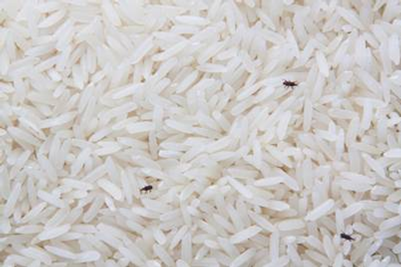Introduction
In our earlier article on temperature control in cooked food, we shared on the “temperature danger zone” and the importance of practising temperature control to prevent the growth of harmful food-borne bacteria. An example of a common bacteria is Bacillus cereus (B. cereus), which can occur in both cooked and uncooked food.
This article provides more information on B. cereus and its occurrence in various types of food.
What is B. cereus?
B. cereus is a food-borne bacteria that can be found in soil, vegetation and in the intestinal tracts of insects and mammals.
Under harsh conditions, the bacteria can convert into a spore form. This enables it to withstand extreme temperatures, and thus survive food processing. Moreover, spores can also accumulate on the surfaces of equipment used in food processing, which could potentially result in B. cereus contamination.
When the conditions turn favourable (e.g. between the temperature range of 5°C - 60°C), the spores can turn into bacteria and multiply in numbers.
What are the symptoms of B. cereus food poisoning?
There are two main types of B. cereus that could pose food safety concerns. The first type causes diarrhoea (diarrhoeal-type), and the second type causes vomiting (vomiting-type).
The diarrhoeal-type of B. cereus produces toxic substances in the small intestine. This means that an individual can suffer from diarrhoea if he/she consumes food that contains large amounts of the bacteria or spores (which can subsequently turn into bacteria).
Spores of this type of bacteria can be present in many types of food, including meat and milk. Studies have found that food such as sauces, soup and salads (with raw vegetables) tend to contain a high amount of B. cereus. Dried plant products, such as herbs, spices and cereals, also contain varying levels of the bacteria. When these products are added to other types of food or reconstituted in water, the spores could turn into bacteria and grow to large numbers if the food is not consumed quickly.
The vomiting-type of B. cereus produces toxins in food. This means that an individual can experience vomiting, nausea and abdominal cramps if he/she consumes the contaminated food. This type of bacteria is commonly associated with food rich in starch, such as rice, noodles and pasta. The bacteria can multiply rapidly and produce toxins in these foods if they are stored in the "temperature danger zone" for a prolonged period of time. In this case, the amount of toxins consumed would influence the severity of symptoms in affected individuals.
In otherwise healthy people, most only suffer from mild symptoms and usually recover on their own within a day.
How can we reduce food-borne incidences caused by B. cereus?
Wash vegetables (especially at the roots) thoroughly with water to remove soil that may contain B.cereus.
Wash food contact surfaces, refrigerators and kitchen equipment systematically with soap or disinfectants to prevent spores from accumulating.
Observe good hygiene practices, such as hand washing and keeping raw and cooked food separate to prevent contamination.
Consume food as soon as possible, regardless of whether the food has been purchased or prepared at home. This would prevent spores from turning into bacteria, and existing bacteria from multiplying.
If the food is not meant for immediate consumption, it should be kept out of the "temperature danger zone" (e.g. kept refrigerated at 4°C or lower, or kept warm at 60°C or higher) . By practising good temperature control, we can limit the growth of the bacteria and its spores. Cooking would not be able to kill the spores or deactivate toxins that have formed.






